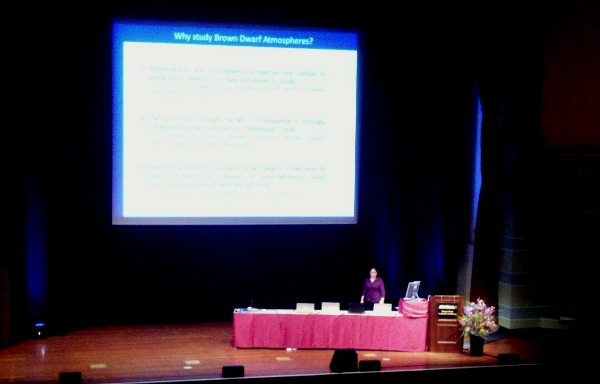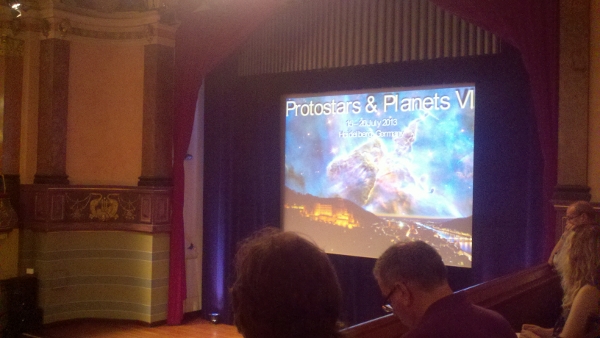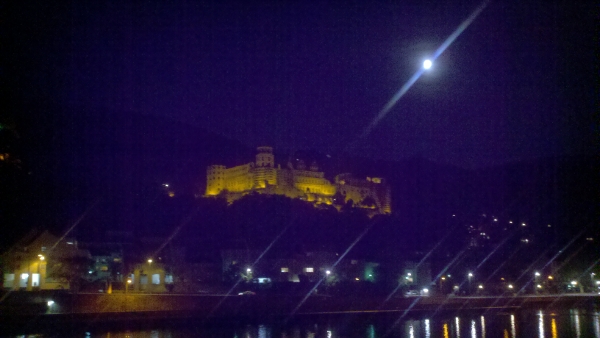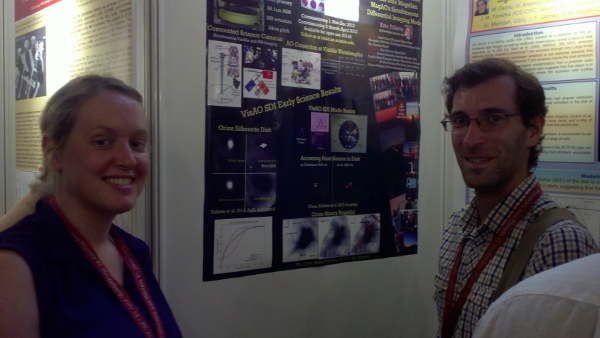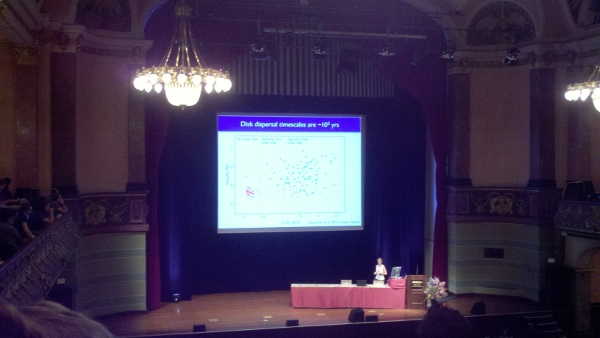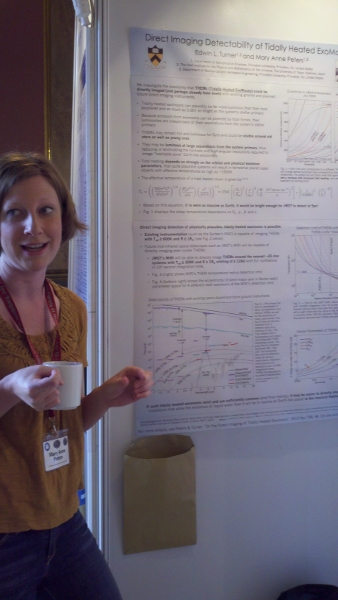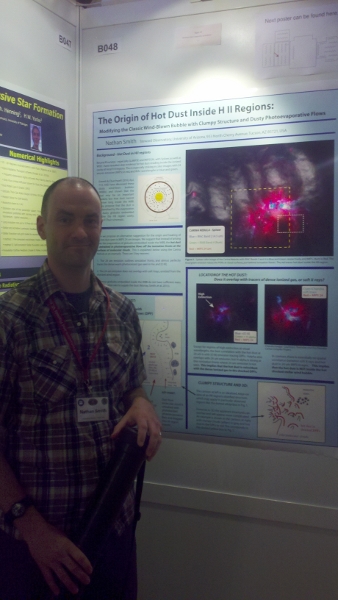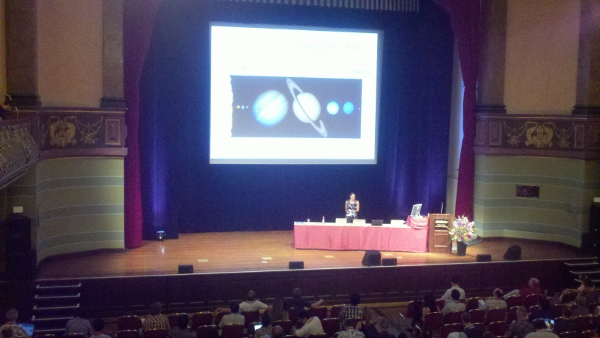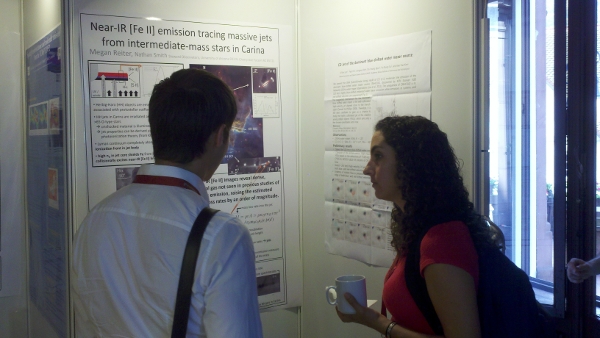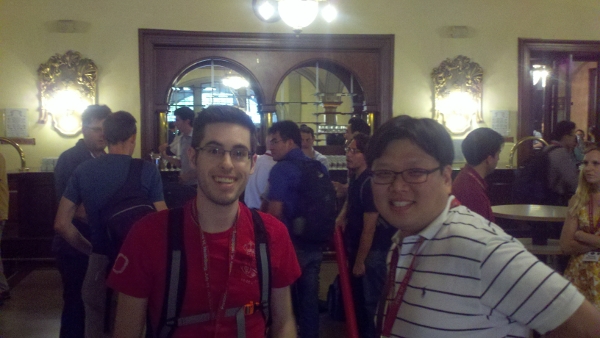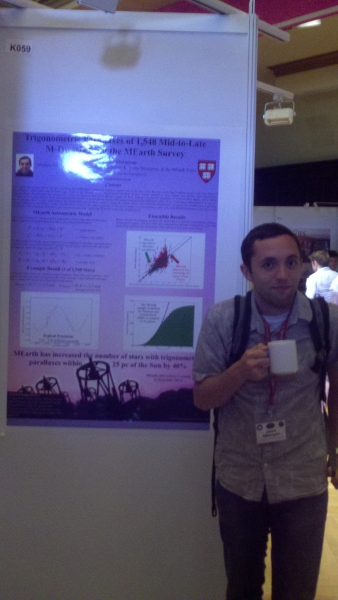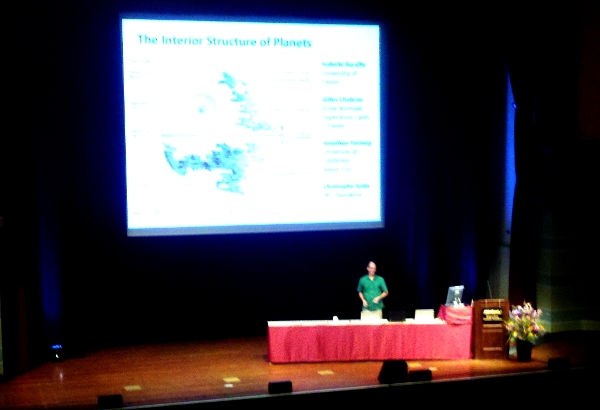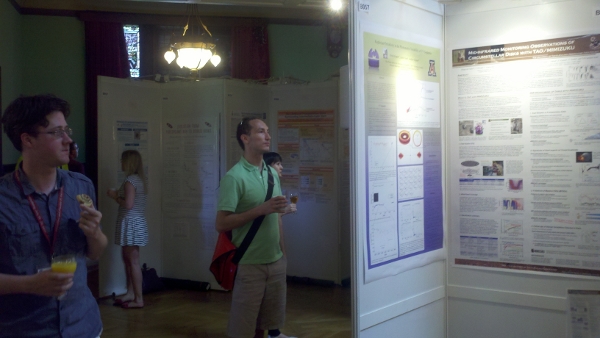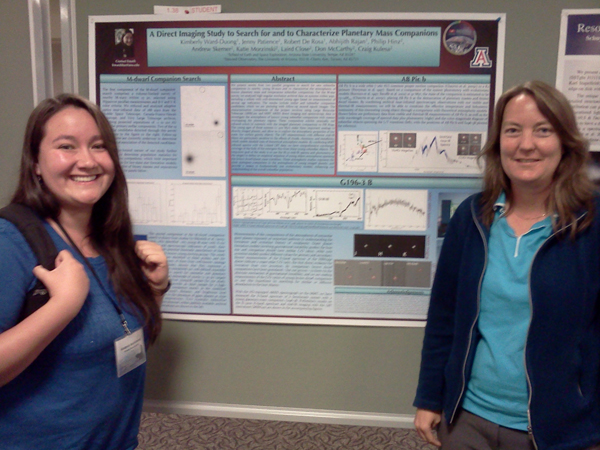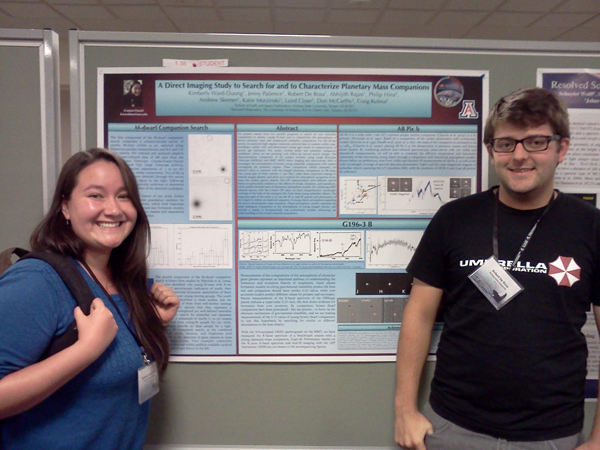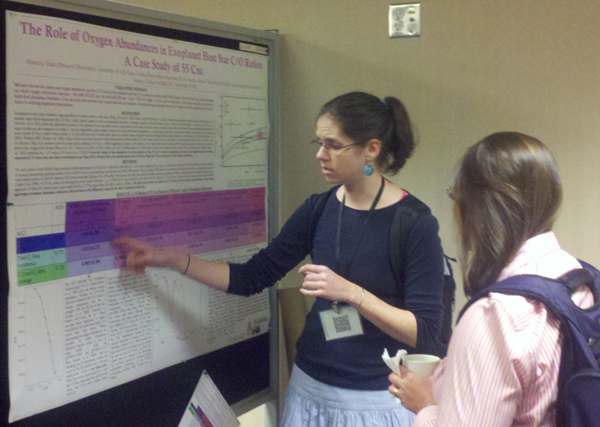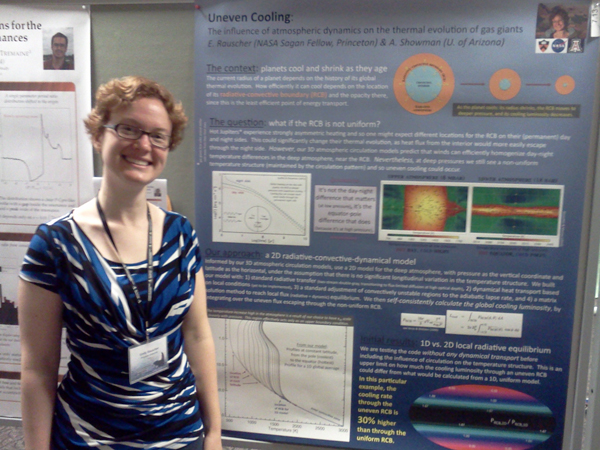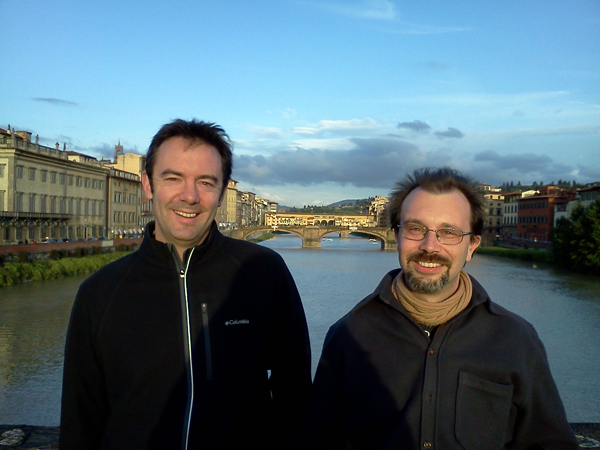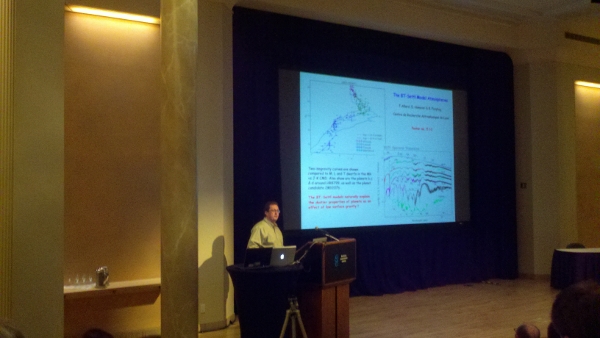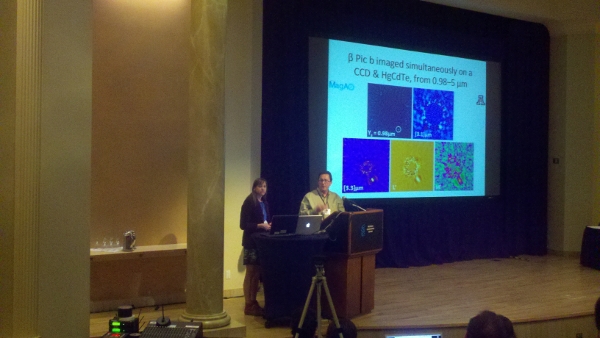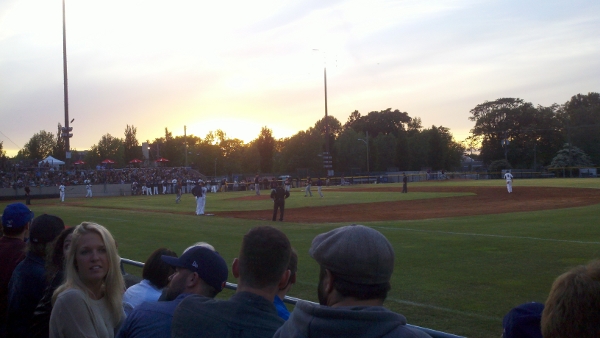The flat pancake-like disks of gas and dust that surround young stars (so-called “circumstellar disks”) are of interest to astronomers because we believe that planets are made from their material. In the 1990s, the Hubble Space Telescope completed groundbreaking observations of the Great Orion Nebula at a red wavelength of light termed “Hydrogen-alpha” (the brightest light emitted by glowing hydrogen gas), revealing a number of circumstellar disks seen in silhouette against the bright background nebula. At the time, these observations provided the most conclusive direct evidence of the existence of circumstellar disks around young stars, and providing some of the first measurements of their size and geometry.
These “silhouette disks” occur because the stars that host them lie between Earth and the glowing hydrogen gas of the nebula. The light from the nebula passes through the disk on its way to Earth and some of it is absorbed by the material in the disk so that less total light reaches us from the regions of the nebula that lie behind it. In other words, the disk casts a shadow that we see as a dark patch amid the glowing gas of the nebula.
The amount of light blocked varies depending on how much material lies in the disk. More specifically, the densest regions of the disk will absorb most or even all of the background light, while thinner regions will absorb less. Imagine a butterfly flying in front of a spotlight. While its body will block enough light to make it opaque, it’s wings will be partially translucent – blocking some, but not all, of the background light. The thicker the wings, the more light they will block. Analogously, the amount of nebular light passing through each point in a silhouette disk is a direct measurement of the thickness (amount of material) in the disk at that point.
Until now, these disks have not been observed in silhouette from the ground. Although the theoretical resolution limit of a large ground-based telescope is higher than that of the small Hubble Space Telescope, the earth’s atmosphere makes it difficult to make images at the theoretical resolution limit of the telescope. This conundrum was the impetus for the development of adaptive optics (AO) technology, which corrects for the blurring effect of the atmosphere.
However, most modern AO systems operate at infrared wavelengths because the Earth’s atmosphere is a little better behaved (more “coherent”) there. It is only with the advent of next generation AO systems like Magellan AO that we are able to correct atmospheric turbulence at the level needed to achieve AO correction in visible light. Since nebulae like Orion emit most of their light in the visible, it wasn’t possible to image these disks in silhouette from the ground until now.
The MagAO system gives us several advantages over HST, the primary being that we are able to take images where the starlight is concentrated in just a small number of pixels (the star is “unsaturated”, so to speak). This allows us to probe the silhouette disks much farther inward than was possible with HST.
We observed the silhouette disk called Orion 218-354 during our December 2012 commissioning run. We were able to probe the amount of light blocked by the large disk all the way from its outer regions at a radius of ~500AU inward to just ~20AU (about the orbit of Uranus in our solar system). Surprisingly, we found that the amount of background light from the nebula that made it through the disk decreased slowly towards the star, and never reached an opaque point. This was unexpected because previous observations of the disk suggested that there was probably more material in the disk, and that it should reach an opaque point very quickly.
There are several possible explanations for why there is so little material in this disk, but one of the more interesting and plausible explanations is that the small dust grains that block Hydrogen-alpha emission from the nebula most effectively have been depleted. Although we believe disks are born with mostly small grains, as they age these grains may collide and coagulate, forming larger and larger grains and eventually pebbles, boulders and planets. The small amount of material that we found in this disk may indicate that this process (called “grain growth”) is well underway in the Orion 218-354 disk.

For more on Orion 218-354 see:
Follette, K. B., et al. “The First Circumstellar Disk Imaged in Silhouette at Visible Wavelengths with Adaptive Optics : MagAO Imaging of Orion 218-534”.
ApJ, 775, L13, 2013 preprint [pdf] arxiv preprint
Abstract: We present high resolution adaptive optics (AO) corrected images of the silhouette disk Orion 218-354 taken with Magellan AO (MagAO) and its visible light camera, VisAO, in simultaneous differential imaging (SDI) mode at H-alpha. This is the first image of a circumstellar disk seen in silhouette with adaptive optics and is among the first visible light adaptive optics results in the literature. We derive the disk extent, geometry, intensity and extinction profiles and find, in contrast with previous work, that the disk is likely optically-thin at H-alpha. Our data provide an estimate of the column density in primitive, ISM-like grains as a function of radius in the disk. We estimate that only ~10% of the total sub-mm derived disk mass lies in primitive, unprocessed grains. We use our data, Monte Carlo radiative transfer modeling and previous results from the literature to make the first self-consistent multiwavelength model of Orion 218-354. We find that we are able to reproduce the 1-1000micron SED with a ~2-540AU disk of the size, geometry, small vs. large grain proportion and radial mass profile indicated by our data. This inner radius is a factor of ~15 larger than the sublimation radius of the disk, suggesting that it is likely cleared in the very interior.
